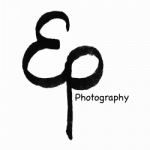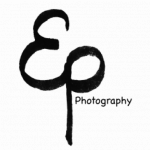Nouakchott, capital of Mauritania
Nouakchott is the capital and biggest city of the Islamic Republic of Mauritania by its full name, located on the coast. From the eyes of a Westerner though, as someone told me as I was getting in the plane to come here, it looks more like a big village than a capital city. The fact is that the country is still new and even though developing, there is still a lot to do. Roads are slowly appearing, buildings and houses are posing up in no time. Weirdly enough, the suburb is more and;ated than the center. As life is happening inside in the center, where people have fans and air conditioning, people living in the suburb are more outside in the shades.
The city itself is located in the desert that gives the weird impression of fog overtime the wind blows a little, carry sand and dust up in the air. The air is hot and heavy which doesn’t help with the smell to the trash. Education on ecology has to be made from scratch here. Indeed, you can see children and adults carelessly throwing plastic bottles, used shoes, food or whatever they want to throw, directly in the street. I wonder seeing the amount of garbage in the streets here how long it is gonna take for the capital to turn into a massive bin.
The pirogues
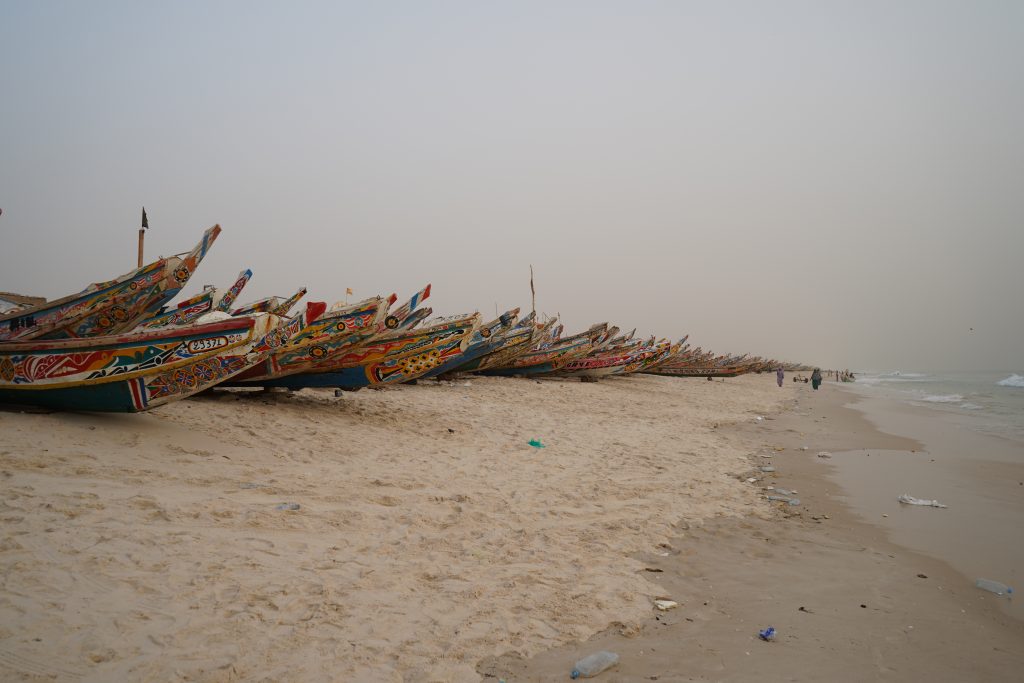
Each evening, you can go to the beach and witness the fishermen coming back fro their day out in the ocean. The boats they use are little colourful pirogues. In more or less good shapes, they invade the beach and the numbers of pirogues siting there is simply impressive. They then unload their boat and go to the nearby market to sell their goods.
There, the chaos is total. The sounds, the smells, the view, everything is quite overwhelming from a European point of view. Cars old and new, donkeys carrying trolleys,
people, dogs, cats, everyone is sharing the road. the fish smell, mixed with the always present garbage is so strong that I still smell it after leaving the place.
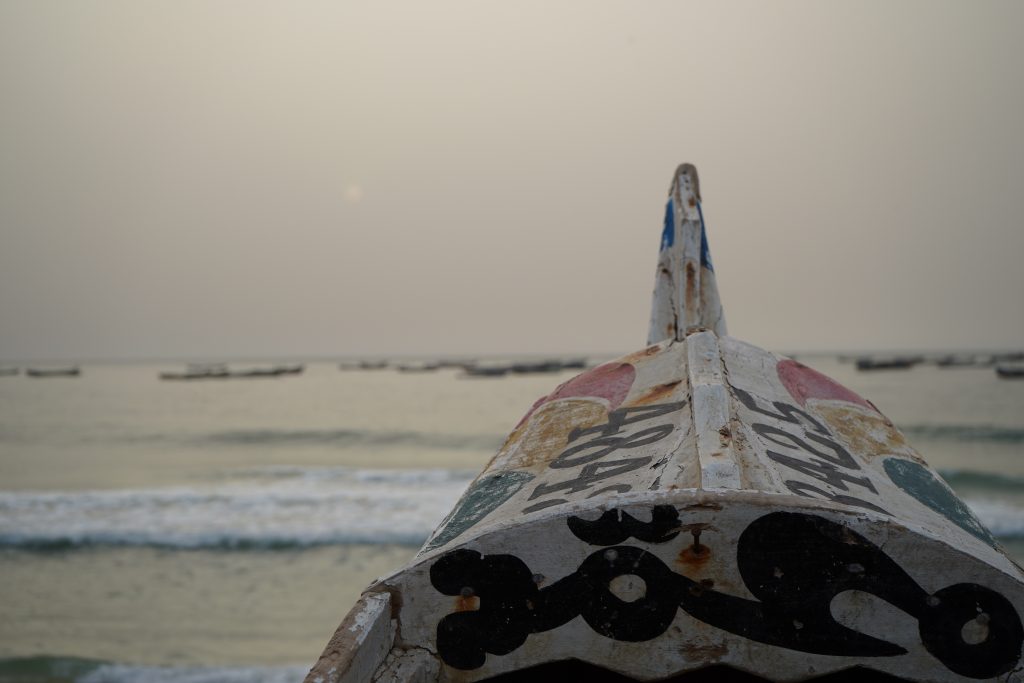
The bush
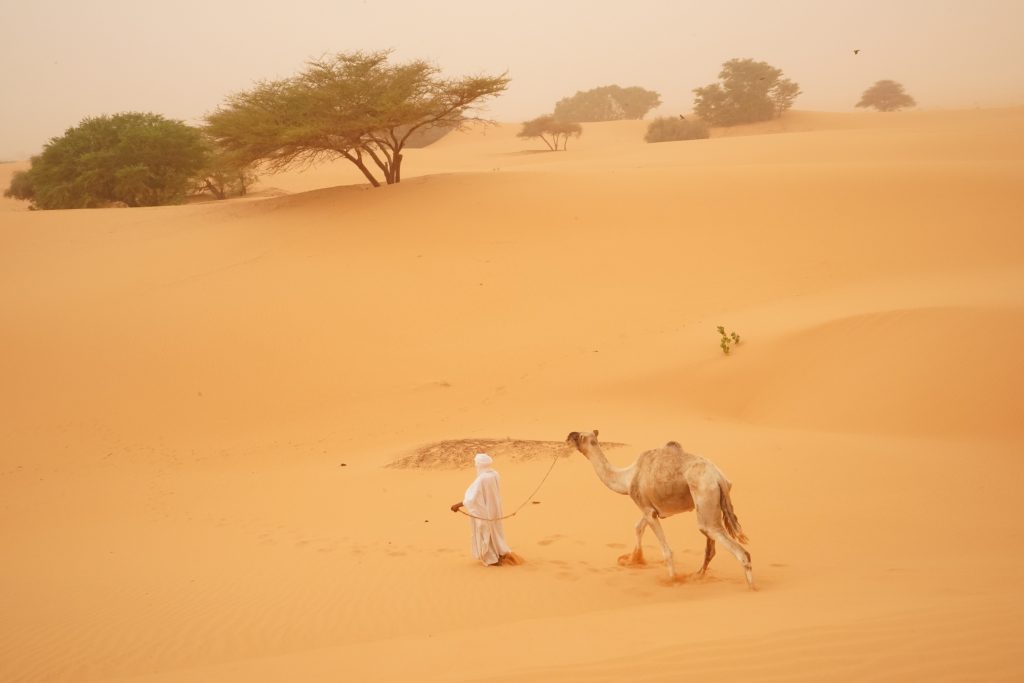
Mauritania is composed at 90% of desert, including its capital city Nouakchott. The heart of it though is located in the Adrar region. Only reopened to tourism in 2016, I got the obligation to go check it out and see what it has to offer. So I ‘rented’ three camel and a camel driver and spent 10 days walking around Chinguetti and Terjit.
I thought I would only see sand and dunes there and I actually got really surprised by the variety of landscapes. From rocky mountains to rich oasis passing by the excepted sand dunes the area almost got it all. I also got the opportunity to meet some nomads and stay at some settlements. Even though I do not speak Hassaniya, the official language of the country, I was still able to witness their way of living and put pieces together with the international hand communication.
Shepherds
Shepherds start their day at dawn with some tea. They then start separating adults sheep and goats to their children. They master to push them in different direction with screams and big gestures like a kind of dance. The adults then follow one of the shepherd while the others make sure the little ones stay. The youngest of the lambs then get attached to a tree so they don’t get lost during the time they are away. During the day, they go find a place for the animals to eat or, one day at of three, they go fetch some water up from a remote well. They will only come back at dusk to tide the babies all together in the middle of spiky bushes with homemade fabric ropes. The purpose of it is so they don’t drink their mothers milk. The last shepherd then brings the sheets and goats back. They save the milk for themselves, in order to make Zrig, a mixture made of battered goat milk, water and sugar with some occasional added powdered cow milk.
Their only source of fresh water in the extreme heat of the region is a goat skin, sewed back together to form a water reservoir. They then hang it in a tree for the day, usually in the shade of a blanket.
The festive food is méchoui, ember roasted sheep meat. They also eat all the part of the animals, including the fat (true delicacy to them) and the giblets. The bones are sucked till the bone marrow and nothing is left to be rotten.
Nomads
Families of nomads still live out there. We came across a few of them, either settled in or on the move. They usually possess a herd of sheep and goats as well as donkeys and camels to carry their possessions.
They carry a tent, some rugs to put on the floor and blanket to sleep on. The life is made mostly outside, in the shades of a tree or a ‘khaimas’, traditional nomadic tents of Mauritania.
They live simply, cooking over fire, eating a shared plate of rice, pasta or couscous, sometimes served with (imported) vegetables or meat, with their hand. Carrying big jars of water for all their needs, washing, dish washing, drinking, cooking…
